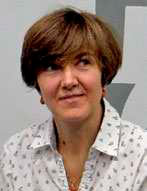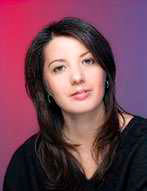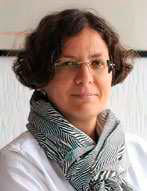Content

Abstract:
The article presents a technique for creating a plastic and design-plastic light-spatial model based on the layout of the urban environment fragment. It also describes how this model corresponds to electrical lighting parameters. The paper formulates the tasks and potential of plastic and design-plastic light modelling and their role in the concept-based search and educational design of lighting solutions. In terms of this article, the plastic model is understood as a layout that exaggeratedly or generically reveals the spatial characteristics of an urban fragment. The design-plastic model is more detailed; it reveals the features of functioning of the latter both in daylight and in electrical lighting. The final stage of educational light modelling is the creation of a computer model of electrical lighting of an environmental situation. The authors of this paper studied the tools of electrical lighting and their role in identifying the device of the environmental fragment, in light routes creation and in scenario of the visual form of urban space. Conclusions are given on the further development of the methodology in the field of lighting design, including the assessment of the emotional perception of the architectural environment objects under electrical lighting. The results of this research were then applied as the basis for the practical project work of students who won the competition “Russian Lighting Design” in 2018.
References:
1. Sokolova, M., Silkina, M. Architectural lighting in search of identity: The environmental approach // SHS Web of Conferences. The 4th International Research-to-Practice Conference Lighting Design, 2017 (LD‑2017) (St. Petersburg, Russia, October 12–13, 2017), Vol. 43 (2018), 9 p. URL: https://doi.org/10.1051/shsconf/20184301013 (accessed: 30.03.2021). 2. Shchepetkov, N.I. Lighting design of the city and interior: A textbook for higher educational institutions / N.I. Shchepetkov, Moscow, 2021, 456 p. 3. Bystryantseva, N.V. Criteria for a comprehensive assessment of the quality of the electrical light environment of the city // Lighting equipment, 2015, # 2, pp. 26–29. 4. Fotios, S., Liachenko, Monteiro A., Uttley, J. Evaluation of pedestrian reassurance gained by higher illuminances in residential streets using the day–dark approach // Lighting Res. Technol, 2019, Vol. 51, pp. 557–575. URL: https://journals.sagepub.com/doi/pdf/10.1177/1477153518775464 (accessed: 30.03.2021). 5. Van Rijswijk, L., Haans, A. Illuminating for Safety: Investigating the Role of Lighting Appraisals on the Perception of Safety in the Urban Environment// Environment and Behaviour, 2018, Vol. 50 (8), pp. 889–912. URL: https://journals.sagepub. com/doi/pdf/10.1177/0013916517718888 (accessed: 30.03.2021). 6. Davidovic, M., Djokic, L., Cabarkapa, A., Kostic, M. Warm white versus neutral white LED street lighting: Pedestrians’ impressions // Lighting Res. Technol., 2019, Vol. 51, pp. 1237–1248 URL: https://journals.sagepub.com/doi/abs/10.1177/1477153518804296 (accessed: 30.03.2021). 7. Karpenko, V.E. Educational complex of light-coloured modelling of urban environment // SHS Web of Conferences. The 4th International Research-to-Practice Conference Lighting Design – 2017 (LD‑2017) (St. Petersburg, Russia, October 12–13, 2017) (Lighting Design 2017), Vol. 43, 2018, 9 p. URL: https://doi.org/10.1051/shsconf/20184301013 (accessed: 30.03.2021). 8. Narboni, R. Lighting of public spaces: new trends and further development// Lighting equipment, 2020, # 3, pp. 27–37. 9. Koval, I.V., Bystryantseva, N.V., Kolgushkina, S.V., Lekus, E.U. Identification of a tool for evaluation of lighting solutions by users on the example of architectural lighting // IOP Conference Series: Materials Science and Engineering, 2020, Vol. 944. URL: https://iopscience.iop.org/article/10.1088/1757–899X/944/1/012018/meta (accessed: 30.03.2021). 10. Sofina, D. Undergraduates of ITMO University won the All-Russian competition “Russian lighting design” [Electronic resource] // ITMO.NEWS: website. URL: https://news.itmo.ru/ru/university_live/achievements/news/8033/null / (accessed: 30.03.2021). 11. Matveev, A.B. Principles of modelling in lighting engineering: Theses of Technical Sciences Candidate Dissertation, M., 1953, 12 p.
Keywords
- fragment of the urban environment
- ambient luminescence
- design and plastic modelling
- project light modelling
Recommended articles
Experience of Design and Plastic Light Environment Modelling. Part 1 Space and Light, Urban Environment L&E, Vol. 29, No. 4, 2021
Methodology for Creating Personalized Adaptive Lighting Systems for Round-the-Clock Shift Workers L&E, Vol.31, No.5, 2023
Research into Luminance Characteristics of Objects with Architectural Lighting of Central Streets of Tula. L&E 27 (6) 2019



